Originally Posted At: https://breakingmuscle.com/feed/rss

http://www.thekitchn.com/feedburnermain
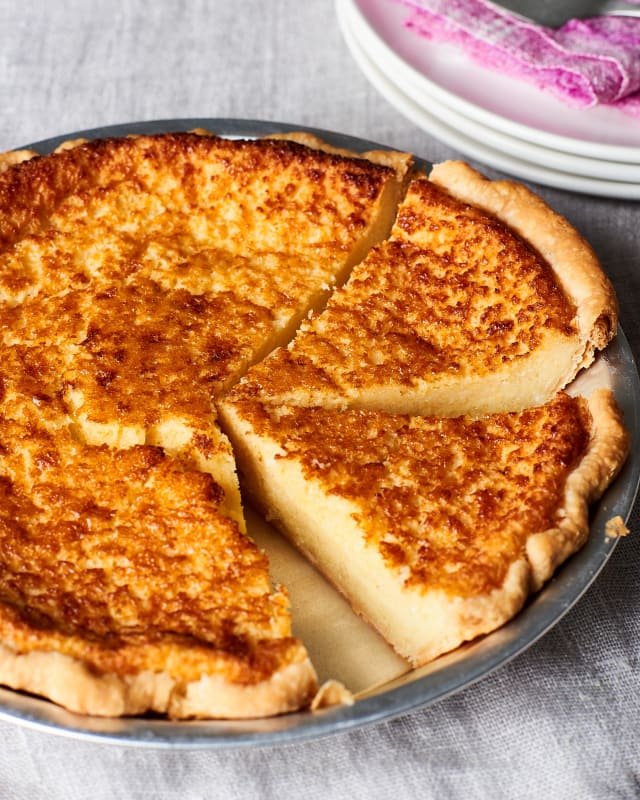
Whether you knew it or not, you’ve likely already eaten some version of chess pie. This category of pie is responsible for favorites like pecan pie, Derby pie, and even Christina Tosi’s infamous Crack pie. At their most basic, chess pies are just sugar, eggs, and butter baked into a soft, custard-like consistency.
Buttermilk chess pie is a classic American pie, with its chess pie roots in England and its buttermilk twang bred in the South. Chess pies aren’t as popular as they once were — your Grandmother probably knows them by heart, but your own parents less so — but their ease and scrappiness, partnered with their revelatory deliciousness means they’re due for a modern comeback. Here’s how to make a classic buttermilk chess pie that is better than anything Grandma might have baked.
http://www.thekitchn.com/feedburnermain

Air fryers might seem like an appliance you can pass over if you’re not regularly deep-frying chicken, but that’s not quite the case. The device, which looks like something that might be mistaken for a UFO if it landed on your doorstep, is great for a number of tasks, including dessert. Even better, the mode of cooking — circulating hot air — allows for even, quick cooking without any fussing or flipping on your end. In other words, it might be just what your weeknight dinner routine is missing.
Intrigued? Today is a great day to grab one. Philips Viva Airfryer, usually $250, is only $100 as part of Amazon’s lead up to Black Friday. But this deal won’t last — it expires midnight P.T.
http://www.thekitchn.com/feedburnermain

There’s nothing like coming home and opening up a bottle of wine in your kitchen — unless you happen to be less than thrilled with your space. Scientific research has proven over and over again that the way your house looks, including the colors it’s painted, the amount of light it gets, how cluttered it is, and even its ceiling height can affect your stress levels and overall feeling of contentment.
The good news is that you don’t need to give your space a drastic overhaul to inject a little bit of cheer. These ideas are simple, cost less than $20 (or nothing at all!), and for the most part are actually fun to do.
Let the happy-making begin!
http://www.thekitchn.com/feedburnermain
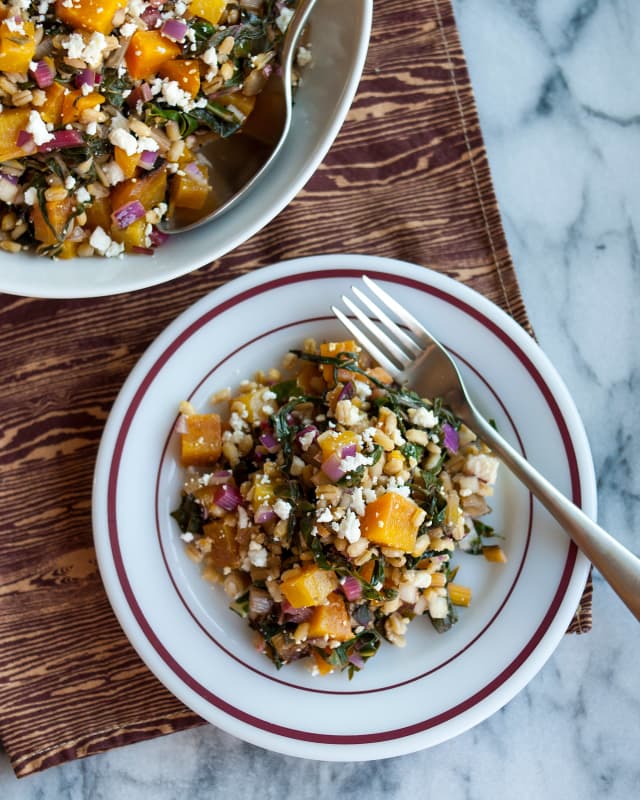
This colorful salad is an oldie but goodie, and a variation of another favorite of mine, my Roasted Beet and Barley Salad. I love the bright pops of golden beets and red onions mixed in with the barley and wilted chard stems. It’s all tied together with a quick lemony dressing and topped with a sprinkle of salty feta.
Originally Posted At: https://breakingmuscle.com/feed/rss
Squash is a vegetable that many love to hate. Maybe it’s the texture or perhaps the somewhat bland flavor that is sometimes attributed to it, but the squash has a high nutritional value and it is worth finding ways that you can truly enjoy it and even learn to love it. Spaghetti squash makes an easy entry point into the squash dinner scene because it’s so delightfully shreddable and maintains a noodle-like texture rather than turning to mush.
http://www.thekitchn.com/feedburnermain
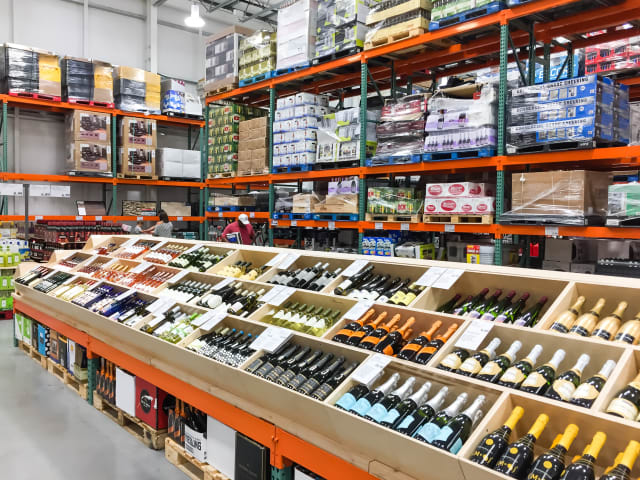
One of my favorite aisles to browse at Costco is in, you guessed it, the wine section. I’m a value-oriented wine shopper (please don’t call me cheap), so I tend to skip right past the fancy-looking wooden crates of wine priced at more than $20 and head to the shelves, which are typically loaded with more affordable wines. I get a thrill when I see my mother-in-law’s favorite pinot grigio on sale before she’s coming for a visit, or when the malbec we like pops up right before we have guests coming for dinner.
Curious about how they keep the prices so good — and where I might find the best value — I did some digging. While Costco was not able to comment on the specifics of how they source and price their wine, I was assured that their offerings are “carefully chosen by [their] team of expert buyers who work with respected winemakers and wineries around the globe to offer Costco members very good wine from the best wine regions in the world at exceptionally good prices.”
Here are seven things I learned about Costco’s wine. Did you know these things?
Originally posted at: http://www.nerdfitness.com/
“This is super embarrassing, but I really struggle with it. What do I do to get rid of my man boobs?”
I know. awkward phrase. But that’s not gonna get us to shy away from the topic here on Nerd Fitness.
A form of this question comes in daily: “How do I get rid ‘X’ fat on ‘Y’ area.”
Things like: “What can I do about this belly fat?” or “Is it possible to ditch these love handles?”
And also, “man boobs” or “moobs.”
I get it – we’re already self conscious beings to begin with. Throw in something about ourselves that make us feel less confident, probably some some (or a lot of) teasing in our past, and it’s how we end up wearing t-shirts in the pool and not taking our shirts off at the beach.
This sucks.
Today, we’re gonna dig into the truth, science, and treatment of man boobs – do you have a true medical condition (called gynecomastia), or is it just extra body fat in an inopportune spot?
Today, we’ll discuss:
First up…
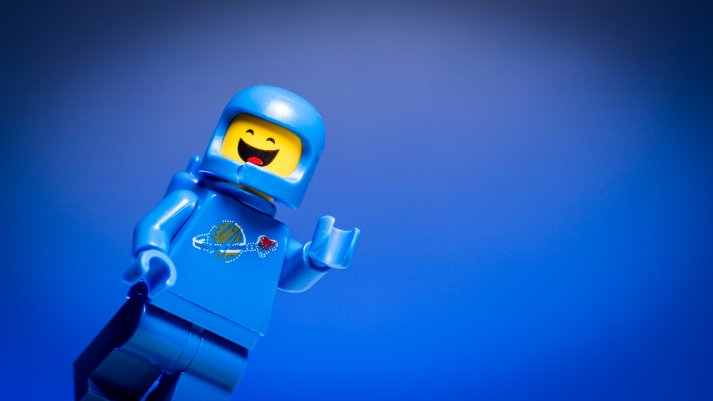
There’s one thing I want to address before we dive in.
My goal with Nerd Fitness has always been to make it an inclusive place where people can share their challenges without fear or judgement. I understand this is already a controversial topic to begin with, and a not-great-but-definitely-used term to describe something that brings guys a lot of shame.
So a few points:
Ok! Here’s a GIF of a puppy to help ease the tension:

Back to our regularly scheduled article.
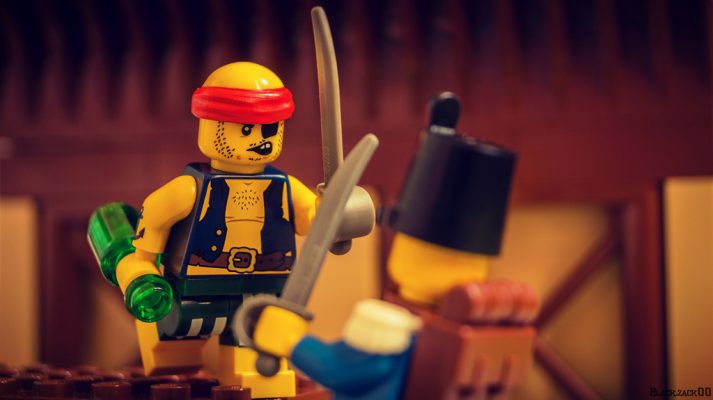
Let’s chat about some medical definitions, because it’ll help us put “man boobs” in some proper context.
Most men who struggle with “man boobs” or “moobs” are in this second category, and the “pseudo” means they don’t really have the condition “gynecomastia.”
There is no hormonal imbalance.
Instead, the body is just storing extra fat in the chest area.
I’ll mostly be talking about shedding body fat and building muscle to lose “moobs,” but I will also talk about gynecomastia and medical conditions later.
Next up!

Why do some men store fat in their chest?
That’s actually a really complicated question. A lot of it has to do with genetics and body types.
Generally, “body types” can be thought of as the following:
There’s also xenomorphs, which have acid for blood.
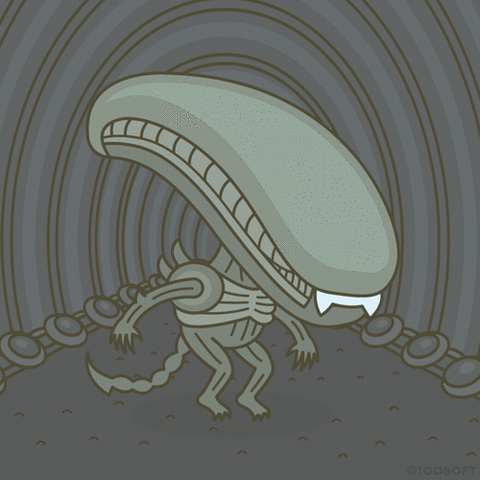
Granted, the three non-alien body types above constitute a gross oversimplification of human beings. People are very complex. Additionally, the difference between the three is real, but not the end-all-be-all to your physique.
I bring this up to point out that dudes process and store calories differently.
And storing calories is a critical concept for our discussion on “man boobs.”
If you eat more calories than you burn, day after day, month after month, year after year, your body has to do something with that extra energy.
If you’re sedentary, more often than not, the body chooses to store that energy as fat.
Depending on your genetics, your body might choose to store that fat in your butt, gut, thighs, or chest. Probably a combination of all those things.
To summarize the main argument of our article on “body types,” while our genes will always affect what we can and cannot be in life, we can also train and work to overcome our “type.”
For example, I’m a “ectomorph” but have worked hard over the past decade to make Captain America proud. We are not our genetics, and we can overcome certain aspects of our biology.
Just because you are an “endomorph” (gain fat easily) doesn’t mean you are destined to be overweight and you’ll never get rid of your man boobs.
It simply means you’ll need to have a natural, two pronged approach to tackling the “moobs” problem: exercise and nutrition.
Speaking of exercise…
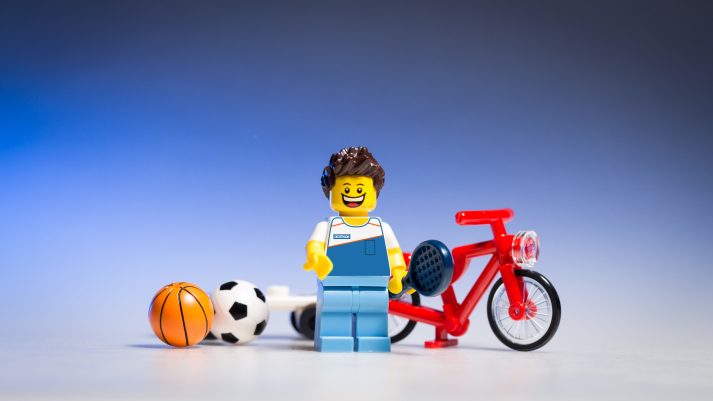
No exercise can specifically target an area of your body for fat loss.
I’ve written about this before.
Fat and muscle are two different ‘systems’ in your body.
Fat sits on top of muscle, like oil on water. When you target a specific area for weight loss, like with a Thighmaster, all you are really doing is exercising the muscle underneath the fat on your thighs.
And don’t get me wrong – this is GREAT (the muscle, not the Thighmaster).
More muscle is a good thing. And yup, any exercise will result in calories burned – which is crucial when it comes to fat loss.
However, we need to think of the other system as well: the fat resting on top.
So, the path to get rid of “man boobs” centers on three points:
Here’s why: strength training preserves the muscles you have (and can help build pectoral muscles).
Your body also has to rebuild the muscle that breaks down while you exercise, so it uses any extra calories you have to do that rather than store it as fat!
Think of it kind of like the Sorting Hat from Harry Potter (come on, this is Nerd Fitness after all). When you strength train, essentially your body will act like the Sorting Hat and divert calories coming in to sit at the cool kids table (“Rebuild muscle!”) and not the “Store as fat” table.
With our strategy, you are decreasing the body fat on top of your muscle, while also building up that same muscle underneath.
This results in tighter skin, with less padding (fat), stretched over firmer muscles. And boom – confidence boosting pecs that would make King Leonidas proud!
Said another way, we’ll be coming at “man boobs” from the outside and inside.
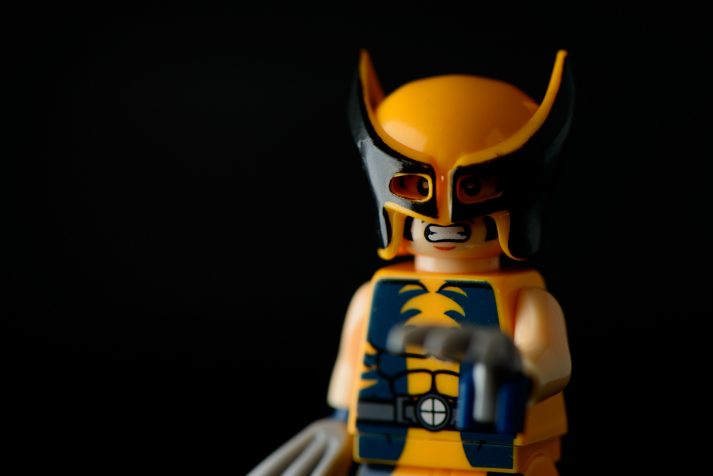
If you are currently sedentary, the best form of exercise to help build a confidence-boosting physique would be strength training.
In our opinion, a strong guy is a healthy guy.
We’ll get you started.
We can build up our pectoral muscles: your chest muscles under your “man boobs.” Same with broadening your shoulders. We can also improve our posture to make sure we stand tall and proud, pulling our shoulder blades back.
In order to accomplish each of these goals, we’re gonna focus on building up strength in our PUSH muscles. And our first stop will be push-ups, a basic but important exercise to start developing upper body strength.
We can show you the correct way do one right here:
I don’t care if you need to do them from your knees or doing an elevated push-up (as we point out in the video). We all start somewhere, and the name of the game is progressive overload – getting stronger with each workout!
Let’s consider the following Advanced Chest Exercises:
Again, start with push ups. Start doing them today. If you can’t do a regular push-up, a knee push-up is totally fine. Just do them.
After you get cozy with push-ups, move onto the above Advanced moves. I asked the male members of our Nerd Fitness Academy about man boobs, and many have reported improving their appearance with these pectoral exercises. They can help.
Plus, strength training will make every other aspect of your life better. Carrying groceries, playing with children, and defending yourself against ninjas will all be much easier after strength training.

Now, I’d be remiss if I didn’t include some other exercises that can change your life:
Squats and deadlifts. These two basic barbell movements are the most ‘efficient’ exercises at building strength and burning fat. They recruit your central nervous system and every muscle, joint, tendon, and bone in your body to get stronger.
In fact, if you could only do 4 exercises for the rest of your life, I would say:
Show me somebody who is super strong at those four movements, and I’ll show you somebody who has a great physique.
Why pull-ups? In addition to recruiting a lot of muscle, they also will help you dramatically with your posture: pulling your shoulder blades back and standing tall can help stretch your skin on your front side, improving your profile when addressing the challenges with man boobs.
Too long didn’t read: get strong, and your life will get better. Build muscle in the right places, and it can help you reduce “man boob” problems.
Now, if you’re all “Steve this sounds awesome. I want to strength train, but damn man. I’m already self-conscious enough about my man boobs…how the hell do I get enough confidence to go into a gym when I don’t know what I’m doing!”
Great question.
If you want expert guidance, form checks, and a custom build workout (and nutritional guidance) to help you transform your physique, we have a private, 1-on-1 coaching program that spurs nerds into action.
If you want guidance from a trained professional, schedule a free call with our team by clicking on the image below and see if we’re a good fit for each other!
Okay, we talked about exercise.
And I mentioned “nutrition” as a MAJOR component when it comes to weight and fat loss.
So I’m gonna dive deep into this.
Why the focus?
80-90% of “how to get rid of man boobs” will rest on how you answer the question: “what do you normally eat?”
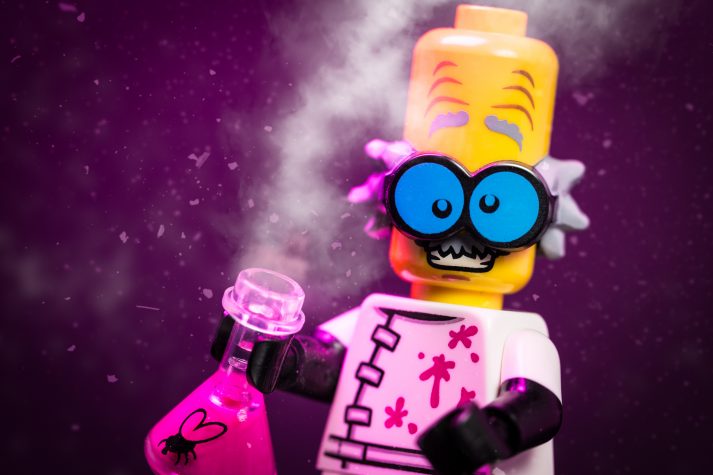
Why is diet so important for weight loss?
Consider what you have to do to lose body fat: you need to expend more calories than your body consumes, consistently.
To gain weight, do the opposite, and eat more than you expend, consistently.
Let’s put some numbers to this: 3,500 calories equals roughly one pound of fat. There’s seven days in a week. If you want to lose one pound of body fat in a week (a worthy, sustainable goal), you need to create a caloric deficit of 500 calories a day: either through consuming 500 less calories, burning 500 more calories, or a combination of the two.
Remember this: a 500 calorie deficit daily to lose a pound a week.
What do 500 calories look like?
Hopefully those two dots above made your head explode.
“Steve, you’re saying that in order for me to counteract just sipping on a Mountain Dew while owning noobs in Fortnite, I’d need to run 5 miles? I haven’t run a mile since gym class. And that was 15 years ago.”
Yup.
Nutrition is 90% of the equation when it comes to weight loss.
NINETY. PERCENT.
Okay I don’t actually know the exact percentage, but 90% is dramatic enough I hope to get you to realize that changing your nutrition is the most important thing you can do to reduce “man boobs.”
Sure, exercise is important. However, when it comes to creating a caloric deficit, it’s much easier to decrease calories consumed vs. increase “calories burned.”
Put a different way: would you rather pour out that Mountain Dew, or run five miles?
This is why Rule #4 of the Rebellion states “We understand that you can’t outrun your fork.”
Let’s tie together our discussion on “man boobs” with our philosophy on fitness: you’re eating too much, and your body is choosing to store these calories wherever it sees fit.
Unfortunately in your situation, it’s choosing to store them in your chest area.
You can’t change the past. But you can change your future.
Which is why we’re gonna reverse the trend: eat a caloric deficit, consistently and permanently. Over time, your body will respond by burning fat from certain areas, in a certain order (again, this is out of your control). As your body fat percentage drops far enough, it should start to remove the body fat from your pectoral area.
While exercise is important, for consistently creating a caloric deficit, we need to scrutinize total calories coming in.
One way to do this is to count every single calorie consumed. Every meal and morsel is recorded, no matter what. While this is indeed effective (track the problem to crack the problem), it’s also tedious, and unlikely to be consistently followed in the long run.
I know this is easier said than done. But it’s time to take a proactive approach to your nutrition. You’re reading this article because man boobs are a real problem for you – educate yourself on what you’re eating and work on cutting back on the calories!
I recommend everyone try tracking their food for at least a week: it can be a food journal, a calorie counting app like MyFitnessPal, etc. It’ll teach you a lot about the food you eat, and yourself.
TOUGH LOVE ALERT: I can almost guarantee that your man boobs are not a result of a slow metabolism. It’s due to the fact that you have been consistently overeating, day in, and day out, for years.
Once you’re done being mad at me and defensive about this, you’ll realize this is great news!
Why? Because it’s fixable. You are not broken. You simply need to start changing how you deal with food.
To do that, we’re going to focus on sustainable changes. After all, temporary changes create temporary results. And we want to get rid of man boobs permanently.
So instead of eating less of the current food that got you here, let’s explore switching up the food you eat all together.

The Nerd Fitness philosophy on diet can be written in three words: Eat REAL food.
I lay it all out in our Beginner’s Guide to Healthy Eating, but come on. Don’t act like you don’t know what “REAL food” is.
Food that grew in the ground, on a tree, ran on the land, swam in the sea or flew through the air. Meat, fish, eggs, vegetables, fruits, nuts are all great examples of REAL food.
This is what you should be eating. If you stick to REAL food, you’ll likely create a caloric deficit naturally.
Why?
The fine folks at WiseGEEK did an awesome post where they took pictures of what 200 calories of a certain food looks like.
200 calories of broccoli gets you enough broccoli to fill up an entire plate:
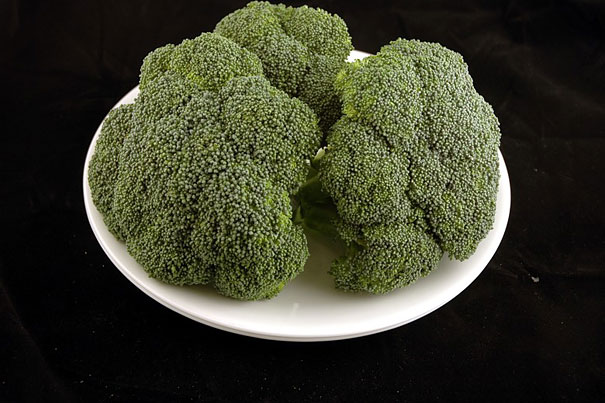
Or half a snickers bar:
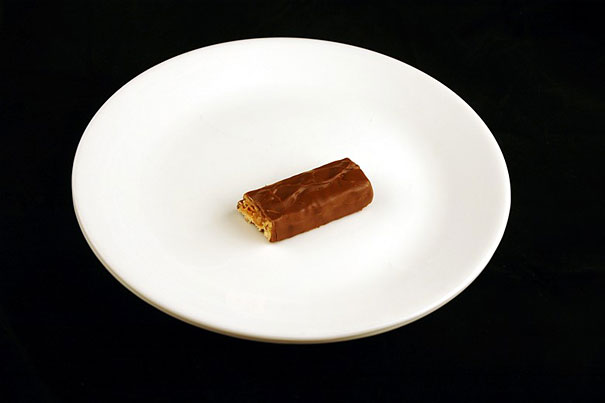
Yeah…
If you want to create caloric deficit consistently, REAL food is the answer. Before you get all huffy, I know a Snickers bar is way more delicious than broccoli – it was designed in a lab by scientists to be AMAZING!
And I’m not gonna tell you to never eat a Snickers ever again either. Instead, you need to start being proactive about your food choices. If you’re gonna eat a Snickers, you better damn well be planning for that by reducing your calorie intake elsewhere.
And if the scale isn’t budging, and your man boobs aren’t getting smaller – you’re still eating too much!
Should you do the Mediterranean diet? Keto? Vegan? Paleo? Maybe. They all follow the same premise: by changing the foods you eat, you’re more likely than not to eat a caloric deficit without struggle. Certain people respond better to certain diets than others.
I personally follow a mental model diet, summarized here:
These four points will help you on your journey to create a caloric deficit.
Disclaimer: this is all easier said than done. After all, 70% of the country is overweight. Don’t worry though, because most of them don’t read Nerd Fitness. You do. This is like a strategy guide for life.
If you’re struggling with portion control and challenges, jump fully into the NF community. We cover human behavior and psychology to help you improve your environment, fix your habit building, and how to surround yourself with people that make you better (including our free message board community)
We’ve helped thousands of people like you here at NF, and we really focus on nutrition.
Like we said, it’s 90% of the battle!
It’s why we created our 10-level nutritional system. Each level gets a bit more challenging and healthier, but you can progress at your own speed to make your changes stick!
The name of the game here at Nerd Fitness is “consistency.” That’s how you target your whole body for fat loss, chest included.
You can download our 10-Level Nutrition Guide when you sign up in the box right here:
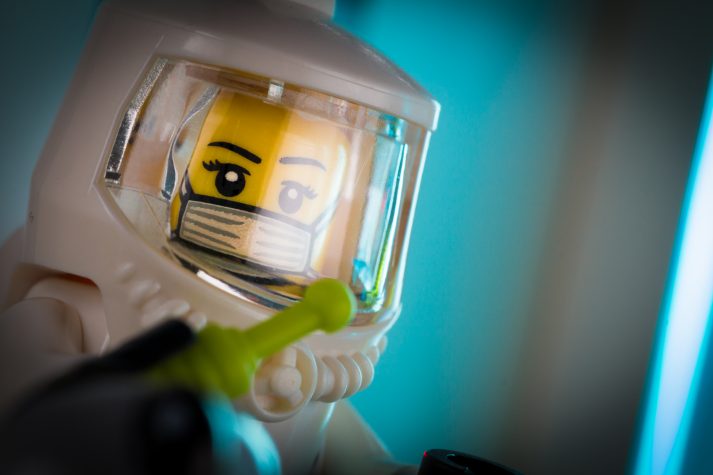
You don’t have to search far on the internet for the advice “avoid soy because it causes man boobs.” It’s repeated so much, it’s assumed to be fact.
Is it?
The definition of gynecomastia (medical condition of man boobs) mentions “increased estrogen activity” as a major cause. So when people say stay clear of soy, they’re worried of its impact on hormones like testosterone and estrogen.
Why the concern?
It comes down to a compound found in soy called “isoflavones.” Isoflavones are a type of phytoestrogen, which act a little like estrogen, the central female hormone.
“Phyto” is derived from Greek and means “plant.” “Estrogen” is estrogen. So phytoestrogen more or less means plant derived estrogen.
The fear of isoflavone rests with our bodies using this plant like estrogen as actual estrogen. A report from Frontiers in Neuroendocrinology found that this is potentially possible[3].
I should now note, we are about to wade into a controversial subject.

We’ll be careful, and rely on good old fashioned science and studies for guidance. However, sometimes science can point us in a couple different and contradictory directions. When this happens, it’s important to acknowledge the uncertainty.
Compounds in soy may act like estrogen in the body. Does this apply to men though? And do they cause “man boobs?”
A 2005 study out of the The Journal of Nutrition did find a relationship between soy intake and hormone levels in men[4]. However, they concluded these to be “minor.”
In 2010, Fertility and Sterility tackled the question on whether soy had “feminizing effects on men.” They found it didn’t[5]. Their report stated that “neither isoflavone supplements nor isoflavone-rich soy affect total or free testosterone levels.” The journal concluded that “there is essentially no evidence from the nine identified clinical studies that isoflavone exposure affects circulating estrogen levels in men.”
Case closed?
Probably, but I’d be remiss not to mention the following:
There is one documented case published in Endocrine Practice, where a man may have given himself gynecomastia by drinking three quarts of soy milk a day[6]. His gynecomastia went away when he stopped. Granted, this is anecdotal evidence, which is far from proof. However, it is interesting and worth noting to round out this discussion. And as mentioned earlier, the ability for phytoestrogen to act as actual estrogen does seem possible…
“Steve, Just tell me: Should I ditch soy to ditch my man boobs?”
Well, as with anything, quantity and context matters. Virginia Miller, an estrogen researcher at the Mayo Clinic, told a Vice journalist “the amount of phytoestrogens in various soy products varies by process method[7].” Dr. Miller didn’t think it was too problematic to eat soy, specifically mentioning that “eating tofu is probably OK.” Interestingly, Miller suggested that BPA found in plastic is more harmful to our endocrine (hormone) system than eating or drinking soy[8].
Confusing stuff.
In general, the consensus seems to be that as long as you don’t binge soy products (three cartons of milk), the amount of phytoestrogens found in a normal diet is fine.
If you have the actual condition of gynecomastia, soy is unlikely to be the root cause.
As more and more research is being done on this subject, this answer could change. My opinion: this is a tiny piece of the puzzle, not the whole picture.
If you are overeating terrible food every day, worrying about the soy you consume is missing the forest for the trees. That’d be like…putting on a long sleeve shirt instead of a t-shirt for added protection, before driving 50 miles an hour into a brick wall. Instead, maybe focus on wearing a seat belt, or better yet – not driving into the wall in the first place!
I swear that analogy made sense in my head before I typed it out.
Anyways – back to real specifics. Here is the Nerd Fitness philosophy on soy: focus on total calories consumed and get that dialed in for consistently caloric deficit.
Only THEN, as your body fat starts to decrease, and you’re analyzing how your body responds to any and ALL types of food, see how your body responds to removing soy from your diet.
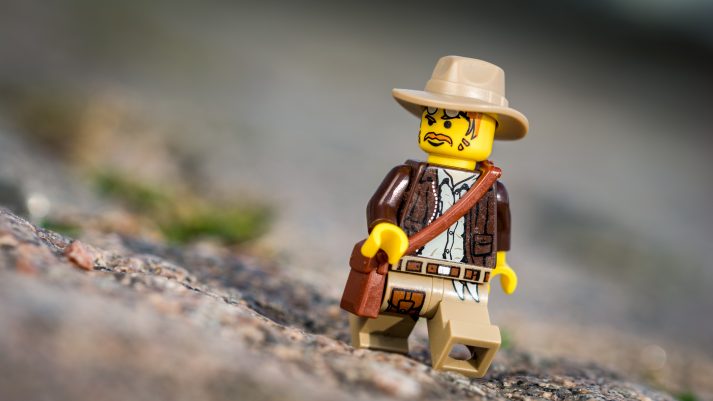
The only way to really know if you have gynecomastia is to go to a doctor.
They’ll be able to tell you (often with an ultrasound) if it’s a glandular breast enlargement or just fatty tissue.
They might also do some blood tests to check testosterone levels and female sex hormones like estrogen.
If you have an imbalance, gynecomastia could be a side effect. They’ll know for sure and can prescribe a treatment.
It should be noted: obesity itself is tied to increasing the development of real gynecomastia.
Excessive fat stimulates the body’s production of estrogen, spurring the growth of actual breast tissue[9].
Said another way, pseudogynecomastia can turn into actual gynecomastia.
If you are diagnosed with gynecomastia, it’ll be between you and your doctor as to next steps. I’ve seen men take one of three paths, as I’ve read anecdotes from our private men’s support community for our NF Academy:
If you’re concerned with “man boobs,” weight management is the path of action we’d recommend, whether you’re facing either gynecomastia or pseudogynecomastia.
Reducing your body fat percentage can help keep your hormones in balance.
In addition, we’d recommend treating the root cause (poor nutrition and overconsumption of calories) instead of only treating the symptom (get rid of man boobs through liposuction).
Your unique situation is just that: unique. I know many men who have treated pseudogynecomastia with diet and exercise, and I know others who are VERY thankful they had surgery to treat the symptom and are much happier as a result.
No judgment here. You do you, brother.
At this point, I bet you have an additional question: “Can hormone balance be affected in the opposite direction? By increasing testosterone?”
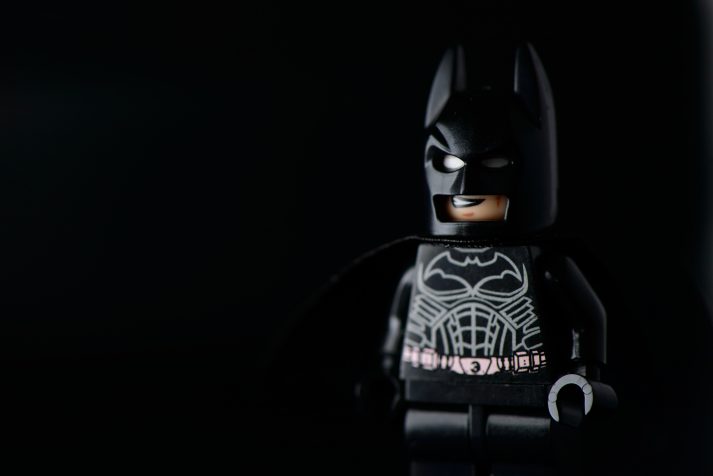
If you do suspect you have a hormonal imbalance, speak with your doctor. They can run tests and tell you exactly what is going on, why, and how to treat it.
I will not be digging into medically supervised testosterone therapy (which is above my pay grade, and between you and your doctor), here’s our guidance on naturally boosting your testosterone levels:
To be honest with you, even if you don’t have low testosterone levels, you should strength train, be mindful, and prioritize rest.
And maybe even eat a little red meat.
And yes, I read that study that says red meat will kill you. I don’t agree with the fear mongering[18].
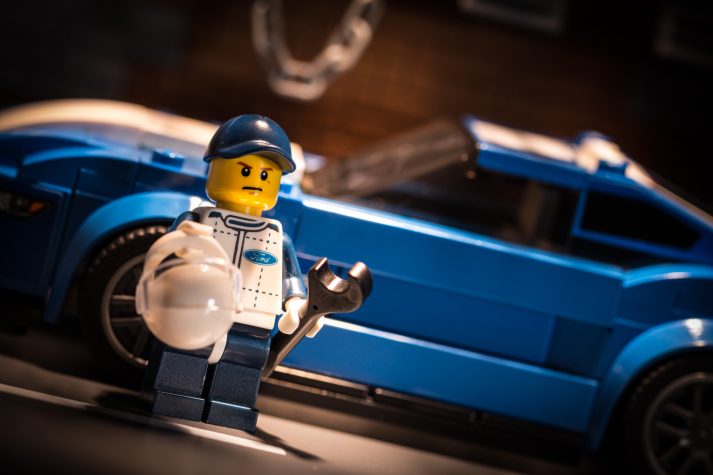
So you have pseudogynecomastia.
And you’re interested in trying to do this the old fashioned way before going down the route of surgery. This would be my recommended path to everybody, though remember I’m not a doctor and I would recommend working with your doctor to put a plan in place together.
OUR NON-DOCTOR ADVICE FOR A DUDE TRYING TO GET RID OF MAN BOOBS NATURALLY:
I do want to stress, that many members of our Academy have reported improving their “man boobs” through the strategies listed in this article. We also have a super supportive private men’s community where embarrassing questions or challenges are discussed and supported.
I’d love for you to join us in the Academy if you’re seeking a positive group of guys to help you on your journey.
We are dealt a certain hand from the genetic lottery: whether we gain muscle quickly or slowly, whether we lose our hair or not, and whether we store fat in our legs or in our chest.
We can get mad about it, or we can play the hand we are dealt.
Until somebody develops robot legs, I’m not growing any taller.
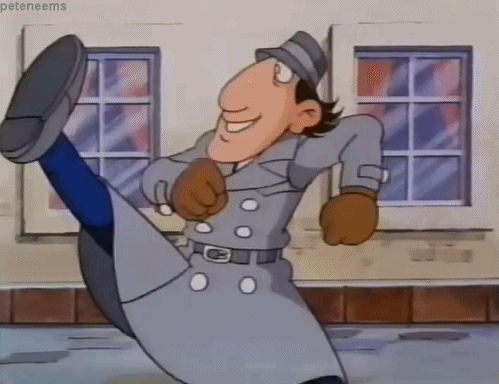
However, let’s not justify our internal excuses, or throw ourselves too big of a pity party.
What we do with our genetic fate, is completely up to us. And we have hundreds of thousands of people in the Nerd Fitness Rebellion who have overcome shitty genetics to transform themselves dramatically.
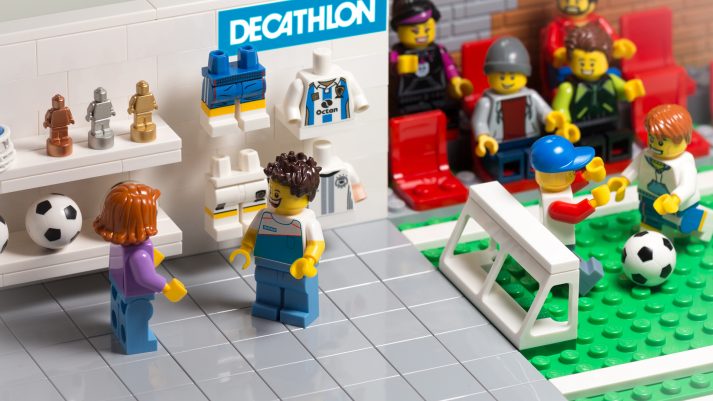
The goal of this post is educational. To teach you how your body stores fat, and what can or cannot be done about it.
It’s more than okay to love yourself and also want to improve your physique.
Body positivity and wanting to look better are not mutually exclusive.
We’re all works in progress, and that’s great.
If you want to use this post to spur you to change, like cleaning up your diet or lifting some weights, awesome!
I’m glad Nerd Fitness can help lead you into action:
I know it’s easier said than done to say “f*** the haters,” but seriously, f*** the haters. Take your shirt off at the beach: you deserve to enjoy the sun and sea like everybody else.
We’re all a work in progress, and I hope this post helps you continue to work on yours!
-Steve
PS: If you are motivated into action, but terrified to get started (or you just want somebody to tell you exactly what to do), we can help! Schedule a free call with our team to learn more about our 1-on-1 Coaching Program will work with you to set up triggers and accountability so you can meet your fitness goal.
###
All photo sources can be found in this footnote right here [19]
http://www.marksdailyapple.com/
 Good morning, folks. My friend and frequent co-author, Brad Kearns, is stopping by the blog today with a follow-up post to his recent article here, How to Cure Plantar Fasciitis. You can catch Brad on the Primal Endurance podcast, his weekly keto show on the Primal Blueprint podcast, and on his new personal podcast venture called Get Over Yourself. If you haven’t checked it out, I’d recommend it. I stopped by a while back for a two-hour show Brad ended up calling “The Ultimate Mark Sisson Interview.” Thanks to Brad for sharing his experience with plantar fasciitis in today’s post and accompanying video. Enjoy!
Good morning, folks. My friend and frequent co-author, Brad Kearns, is stopping by the blog today with a follow-up post to his recent article here, How to Cure Plantar Fasciitis. You can catch Brad on the Primal Endurance podcast, his weekly keto show on the Primal Blueprint podcast, and on his new personal podcast venture called Get Over Yourself. If you haven’t checked it out, I’d recommend it. I stopped by a while back for a two-hour show Brad ended up calling “The Ultimate Mark Sisson Interview.” Thanks to Brad for sharing his experience with plantar fasciitis in today’s post and accompanying video. Enjoy!
Since you’ve worked so hard to heal your chronic pain by making longer, stronger, more supple muscles and connective tissue, let’s make sure you never again regress into plantar fasciitis hell! Today I’ll detail how to transition gradually and sensibly toward a more barefoot/minimalist lifestyle—and what types of shoes will interference the least in that process (when you have to wear them).
As you increase your barefoot competency, you’ll reduce the risk of chronic pain and injury to your feet and throughout your lower extremities. You’ll also improve your technique (in running and other sports) as well as your balance, explosiveness, speed, endurance, and kinesthetic awareness when doing all manner of physical activity. Yep, bare feet are functionally superior and more comfortable than shoes in most every way—except when you need the support and protection of shoes for specialized physical endeavors that could easily injure exposed feet.
While I don’t have concrete proof at my fingertips, I’m going to make the bold proclamation that Grok did not suffer from plantar fasciitis. Our ancestors walked, hiked, sprinted, and even ran long distances over assorted natural terrain for 2.5 million years using bare feet, or rudimentary sandals or moccasins. A shoe-dominant lifestyle came into play only as recently as the Industrial Revolution. The epidemic chronic foot pain and assorted conditions suffered by modern humans are strongly influenced by spending a lifetime in cushiony, constrictive footwear with an elevated heel. Modern footwear weakens your lower extremities, messes up the synchronistic functioning of your entire musculoskeletal system and central nervous system, compromises correct posture, and makes you vastly susceptible to injury, dysfunction, and chronic pain.
You may be aware of some backlash in the minimalist footwear movement in recent years, as naysayers caution about the increased risk of injury with bare feet or “flimsy” shoes. As misguided as these negative claims are, it’s reasonable to gracefully acknowledge the inherent injury risk of being foolish when transitioning to more barefoot experiences and to learn how to do it the right way. Accordingly, here are some tips for making a safe and comfortable transition:
Acquire a pair of minimalist shoes that you will integrate into daily life here and there. Here are some athletic shoe models, listed in order of progression from most support to most barefoot-like: Nike Free’s (flexible sole, but well-built on top), New Balance Minimus (minimal heel elevation, but well built on top), Merrell Trail Glove (fits your foot like a glove, with little or no heel elevation, but a full toe box and good support for trail running), Luna Sandals (inspired by our ancestors, and invented by the irrepressible Barefoot Ted McDonald), Vibram Five Fingers (the ultimate barefoot experience with the independent toe operation; today there are many similar brands).
Choose the lowest heel elevation option for your dress shoes, leisure shoes, and athletic shoes. For women who are accustomed to wearing heels, any reduction in heel height will make a difference, but ideally you’ll move to flats. Guys, this might mean choosing a different dress shoe that looks the same, but with less heel. Elevated heels promote shorter, weaker, Achilles tendons and calf muscles, unwinding all the hard work you did stretching and mobilizing.
Over time, strive to make progress. Start using minimalist shoes during strength training sessions at the gym. Progress through the footwear options to the least support. Reject the “shoe mileage” ethos and keep your shoes until they are battered and worn down to the bare minimum!
Finally, please employ the tips in the proper context of your personal situation. Your barefoot efforts should feel great and should be free from any sort of pain and suffering. If you experience next day muscle tightness after jogging a mile on the grass, work through it with stretches and drills, and expect improvement and increased resiliency over time. If you’re hobbled and inflamed after spending a full or half shift in your fancy new minimalist shoes, dial it back to a goal of one hour in the minimal gear and the rest in regular.
Even if you follow all the guidelines well, realize that your decades of using cushiony, elevated shoes has generated significant atrophy in your lower extremities. Consequently, you’ll have a moderate to significant risk of injury during your transition. If you have to retreat here and there from an aggressive strategy, don’t be discouraged. As with transitioning from carb dependency to becoming fat- and keto-adapted, everything that happens can be a positive learning experience—even an indulgence followed by a recalibration.
Check out this video for more about minimalist shoe wear and how they support long-term plantar fasciitis recovery (as well as general foot health).
Let’s hear from you? How has your healing process for plantar fasciitis gone? What shoes have you settled on, and how has barefooting made a difference in your recovery? Thanks for reading today. (And if you’re interested in learning more about a barefoot lifestyle, take advantage of the special offer to download the Amazing Feets ebook for free on my website.)
The post Healing Plantar Fasciitis: Best Shoe Choices appeared first on Mark’s Daily Apple.
http://www.thekitchn.com/feedburnermain
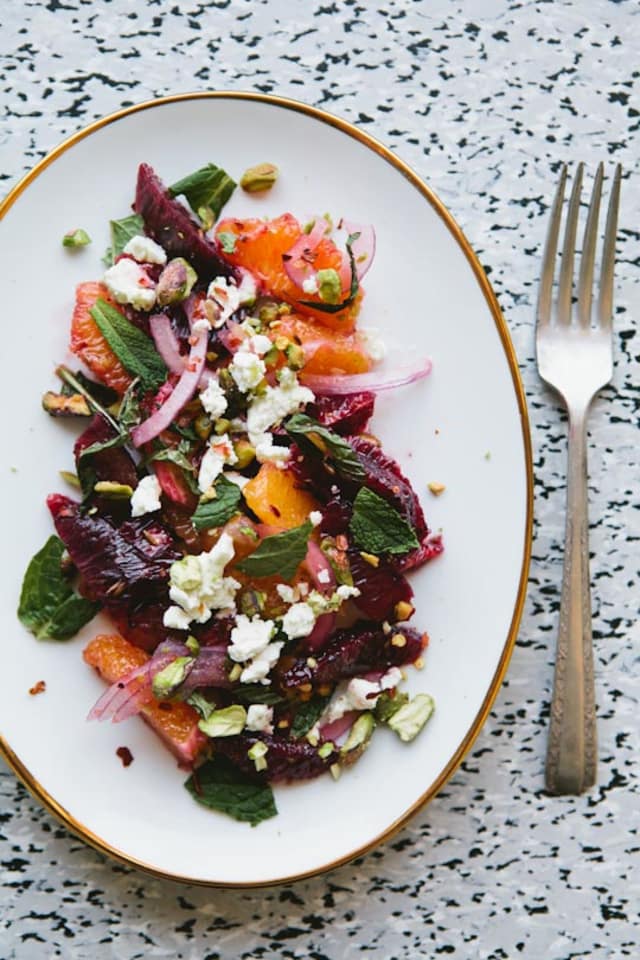
Thanksgiving is a time for plates piled high with turkey, stuffing, mashed potatoes, pie, and much more. In short: it’s a day of feasting at its finest. But in the mix of all those ultra-comforting side dishes, I also like to include the option for something a little lighter — like a fresh and vibrant salad — to balance out the heartier, heavier dishes.
These 20 colorful salads will show you it’s worth making room for a bright spot on the Thanksgiving table in the form of a refreshing salad — like an arugula, pear, and blue cheese salad; or a kale and apple salad with warm pancetta vinaigrette. For any with more delicate greens, remember to dress them right before serving to make sure everything stays crisp.